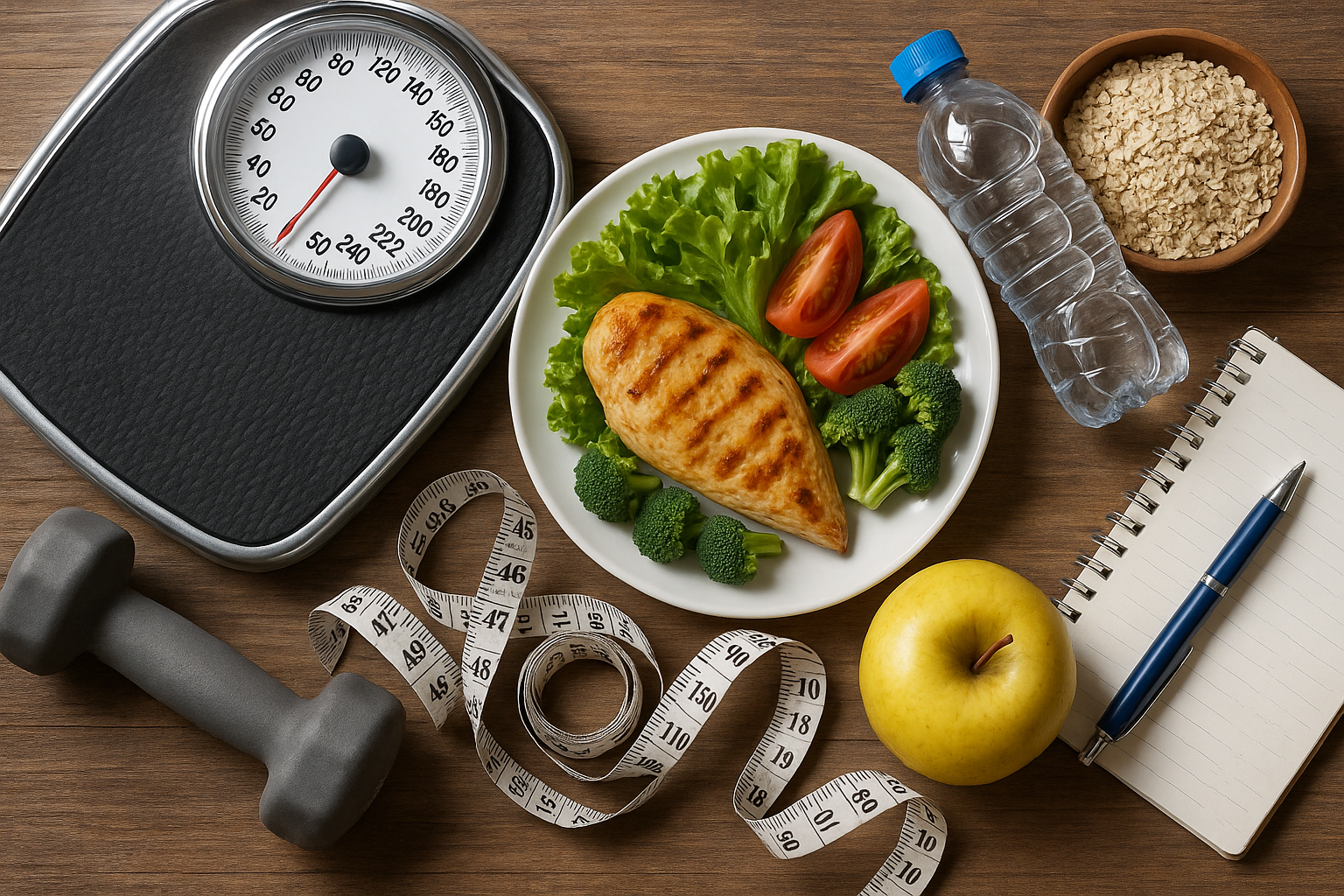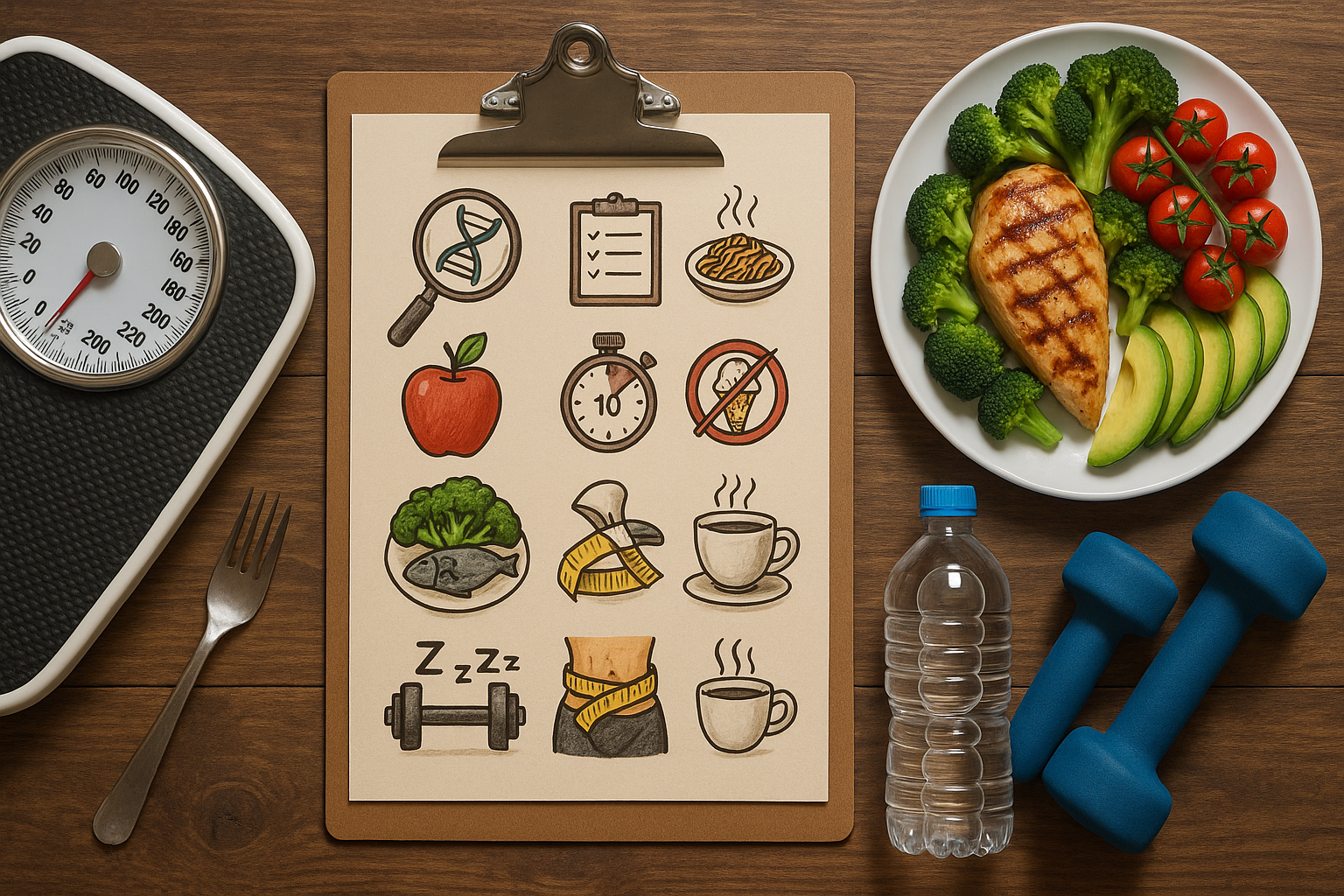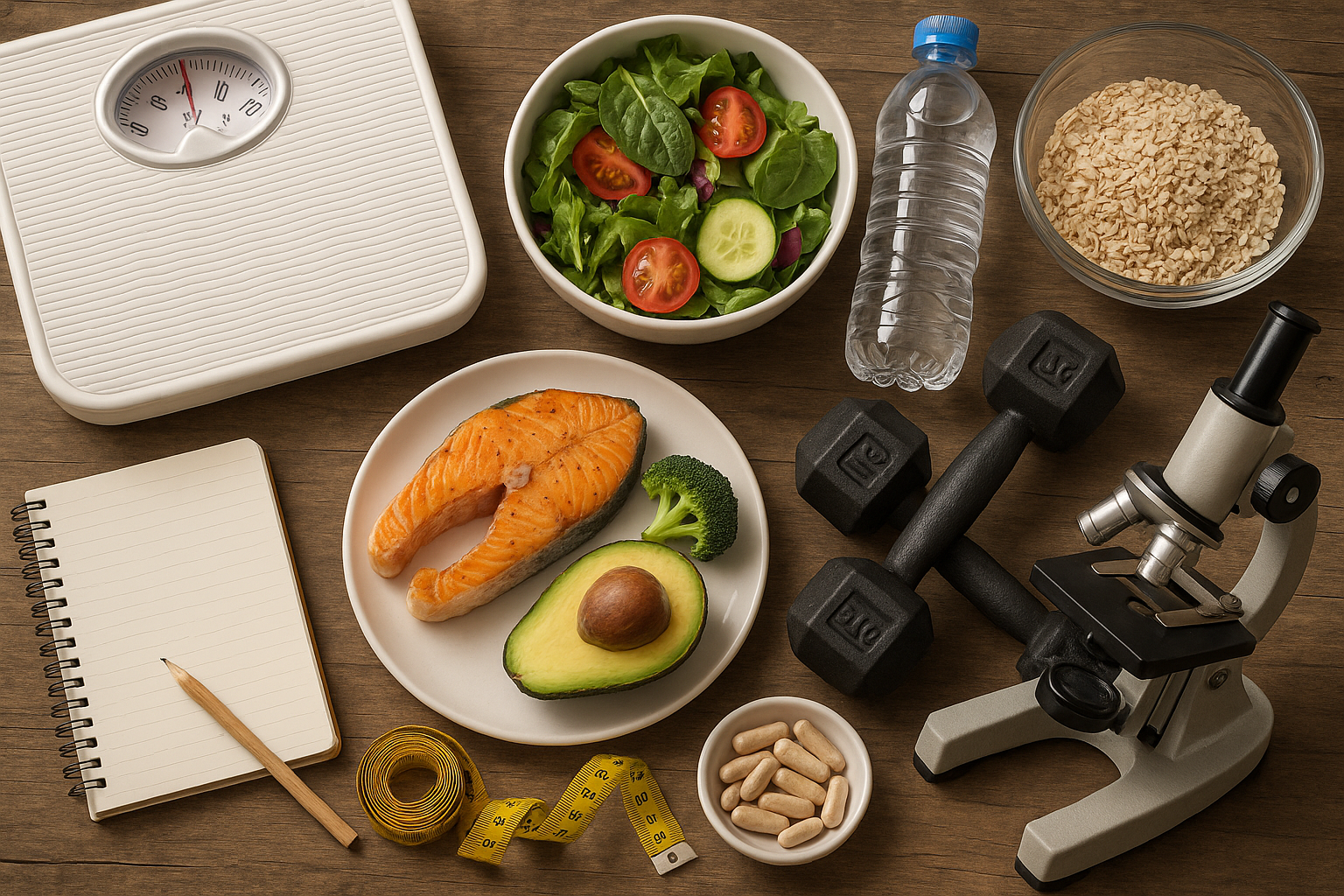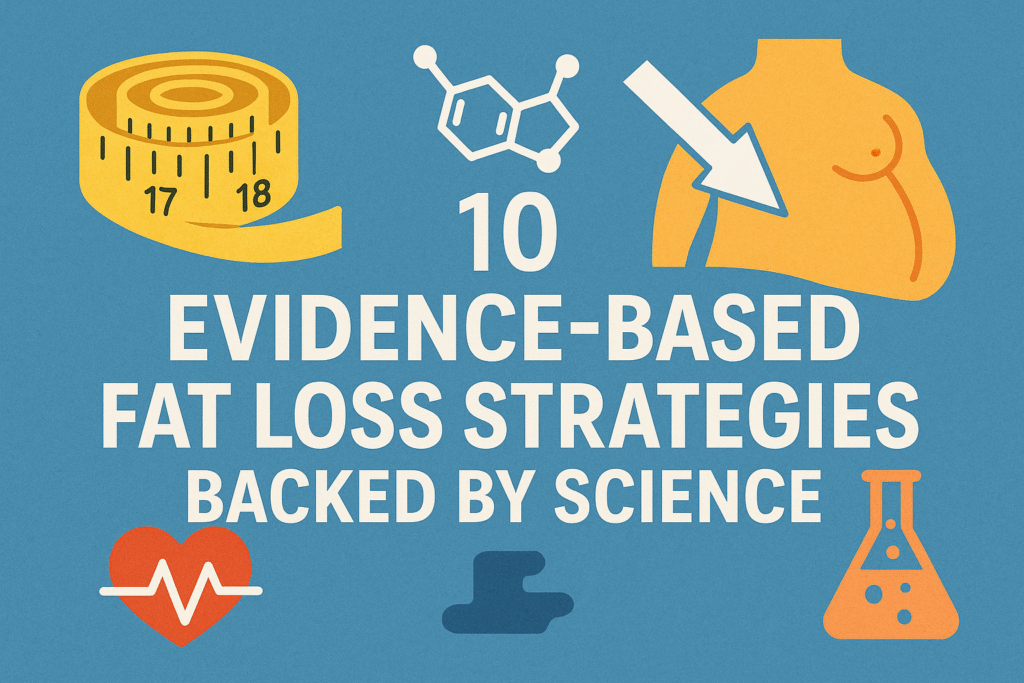1) Create a sustainable calorie deficit
– Why it works: Fat loss requires burning more energy than you take in. Sustained negative energy balance forces the body to draw on stored fat.
– Evidence: Multiple controlled trials and reviews show calorie deficit is the primary driver of weight loss regardless of macronutrient ratio.
– Practical tip: Aim for a moderate deficit (about 10–20% below maintenance or ~250–750 kcal/day) so you lose roughly 0.5–1% bodyweight per week. Very large deficits increase muscle loss and are hard to maintain.
2) Prioritize protein to preserve muscle and increase satiety
– Why it works: Higher protein intake helps maintain lean mass during weight loss, increases thermogenesis, and reduces hunger.
– Evidence: Meta-analyses show higher-protein diets preserve fat-free mass and support greater fat loss during energy restriction.
– Practical tip: Target ~1.6–2.2 g protein per kg bodyweight per day (or 0.7–1.0 g/lb). Distribute protein across meals (20–40 g per meal) and include a protein source at every sitting.
3) Do progressive resistance training
– Why it works: Lifting weights signals the body to retain or build muscle, which improves body composition and helps maintain resting metabolic rate during dieting.
– Evidence: Randomized trials show resistance training reduces muscle loss vs. diet alone and improves strength and metabolic health.
– Practical tip: Train major muscle groups 2–4 times per week using progressive overload (gradually increasing weight, reps, or sets). Focus on compound movements (squats, deadlifts, presses, rows).

4) Add aerobic and interval training for extra calorie burn and fitness
– Why it works: Cardio increases energy expenditure; high-intensity interval training (HIIT) can provide similar fat-loss benefits to longer moderate-intensity exercise in less time and improves cardiovascular fitness.
– Evidence: Meta-analyses show both steady-state aerobic exercise and HIIT reduce body fat; HIIT is time-efficient and beneficial for cardiometabolic markers.
– Practical tip: Aim for 150–300 minutes/week of moderate-intensity cardio or 75–150 minutes of vigorous activity, plus 1–3 HIIT sessions per week if you tolerate them.
5) Increase non-exercise activity thermogenesis (NEAT)
– Why it works: NEAT—walking, standing, fidgeting, household tasks—can vary by hundreds of calories per day and meaningfully affect energy balance.
– Evidence: Research links higher NEAT to lower fat gain; interventions that increase daily steps reduce weight or prevent regain.
– Practical tip: Build NEAT into your day: take frequent short walks, stand more, use stairs, set a step goal (e.g., increase baseline by 2,000–3,000 steps/day).
6) Favor whole, minimally processed foods and fiber
– Why it works: Whole foods and high-fiber diets increase satiety, slow digestion, and often reduce calorie density and total calorie intake.
– Evidence: Randomized feeding trials show ultra-processed diets lead to greater calorie intake and weight gain compared with unprocessed diets (e.g., controlled inpatient trials).

– Practical tip: Fill most of your plate with vegetables, lean proteins, legumes, whole grains, nuts, and fruit. Aim for ~25–35 g fiber/day to improve fullness.
7) Limit liquid and alcohol calories
– Why it works: Liquid calories (sugary drinks, alcohol) are easy to consume and don't trigger the same satiety as solid food, increasing overall calorie intake.
– Evidence: Epidemiological and trial data link sugary beverages and excessive alcohol to weight gain.
– Practical tip: Replace caloric drinks with water, sparkling water, or unsweetened tea/coffee. If drinking alcohol, account for those calories and limit frequency.
8) Use behavioral strategies: self-monitoring and planning
– Why it works: Tracking intake, weight, and activity increases awareness, accountability and predicts better outcomes.
– Evidence: Reviews consistently find self-monitoring (food logs, weigh-ins) is one of the strongest predictors of successful long-term weight loss.
– Practical tip: Use an app or simple food log, weigh weekly (not obsessively), plan meals and snacks, and set specific, measurable goals.
9) Prioritize sleep and manage stress
– Why it works: Short sleep and chronic stress disrupt appetite hormones, increase cravings for energy-dense foods, and promote visceral fat accumulation.

– Evidence: Meta-analyses connect short sleep with higher obesity risk; stress and elevated cortisol are associated with abdominal fat and worse diet choices.
– Practical tip: Aim for 7–9 hours/night, keep a consistent sleep schedule, use relaxation techniques (deep breathing, brief walks, meditation) to reduce stress-related eating.
10) Use timing and dietary patterns to support adherence (optional tools)
– Why it works: Approaches like time-restricted eating (a form of intermittent fasting) can simplify calorie control and improve metabolic markers for some people, though benefits mainly stem from calorie reduction and improved adherence.
– Evidence: Trials and reviews show intermittent fasting and time-restricted eating produce weight loss comparable to continuous calorie restriction when calories are matched; individual responses vary.
– Practical tip: If it suits your lifestyle, try a 10–12 hour eating window or alternate-day strategies only if they help you eat less overall. Prioritize what you can adhere to long-term.
Practical summary and safety
– The most reliable route to fat loss is a sustainable calorie deficit combined with adequate protein and resistance training to protect muscle. Cardio, NEAT, whole foods, sleep, stress management, and behavioral tools improve results and long-term maintenance.
– Rate of loss: aim for gradual loss (≈0.5–1% bodyweight/week) to preserve muscle and reduce regain risk.
– Medical note: If you have medical conditions, are pregnant, breastfeeding, or taking medications, consult a healthcare provider before beginning a weight-loss plan.
If you’d like, I can convert these into a 4–8 week sample plan (meals, workouts, step goals) tailored to your age, sex, weight, and activity level. Which would you prefer?

